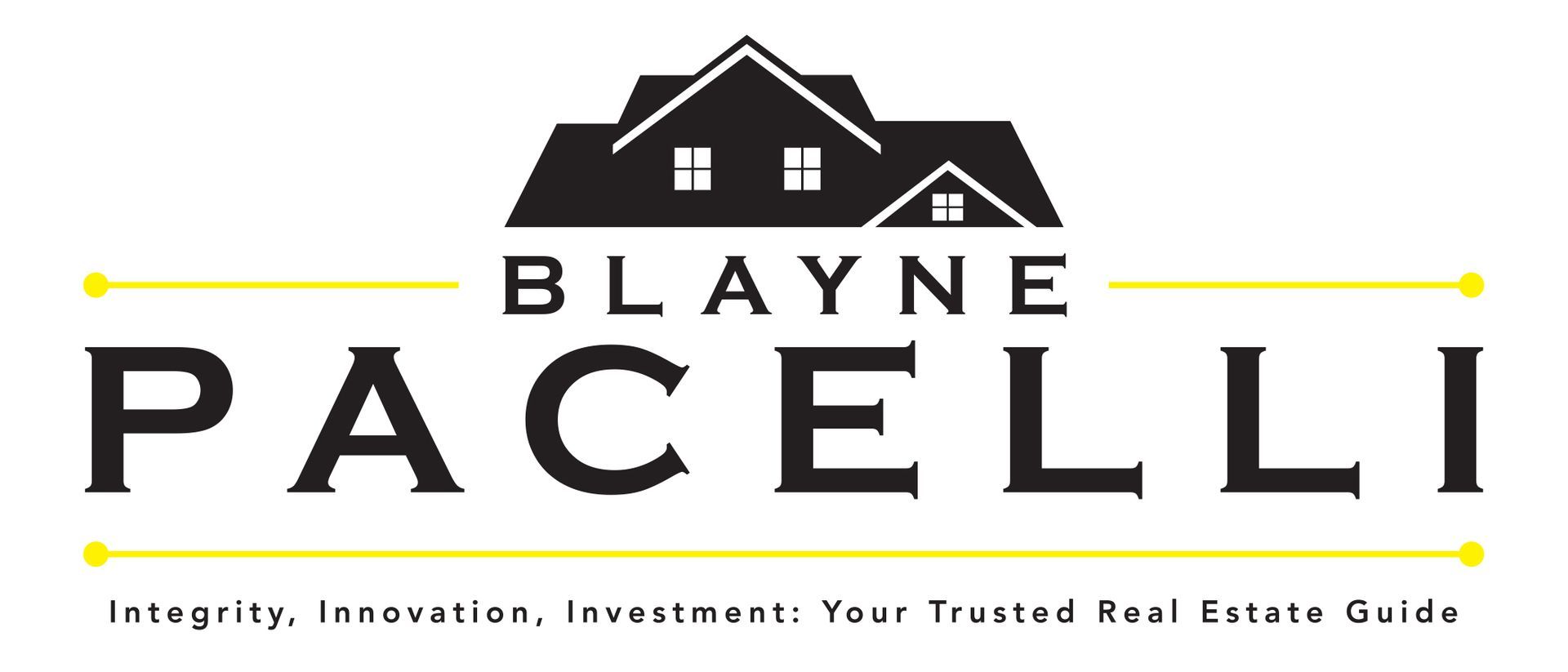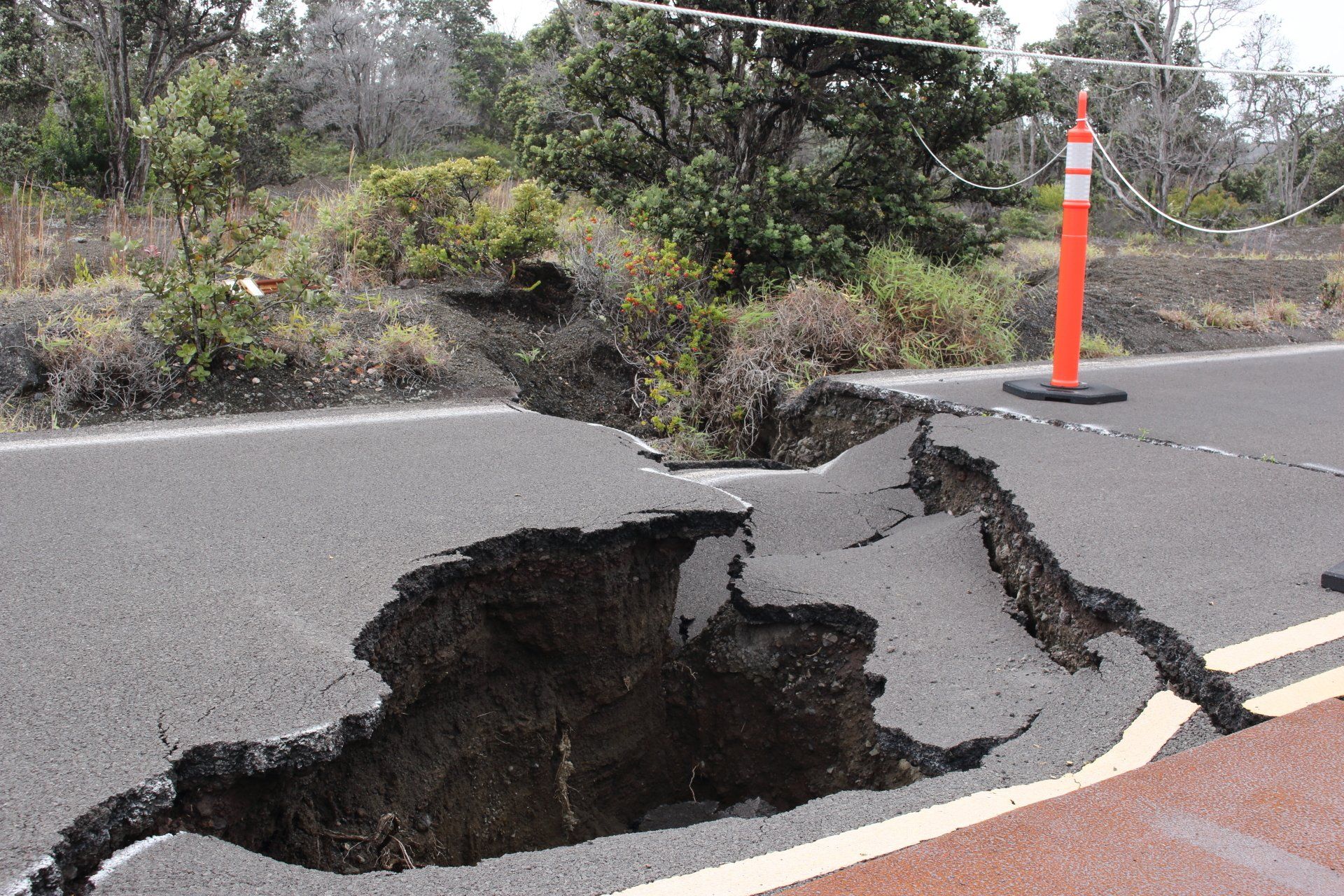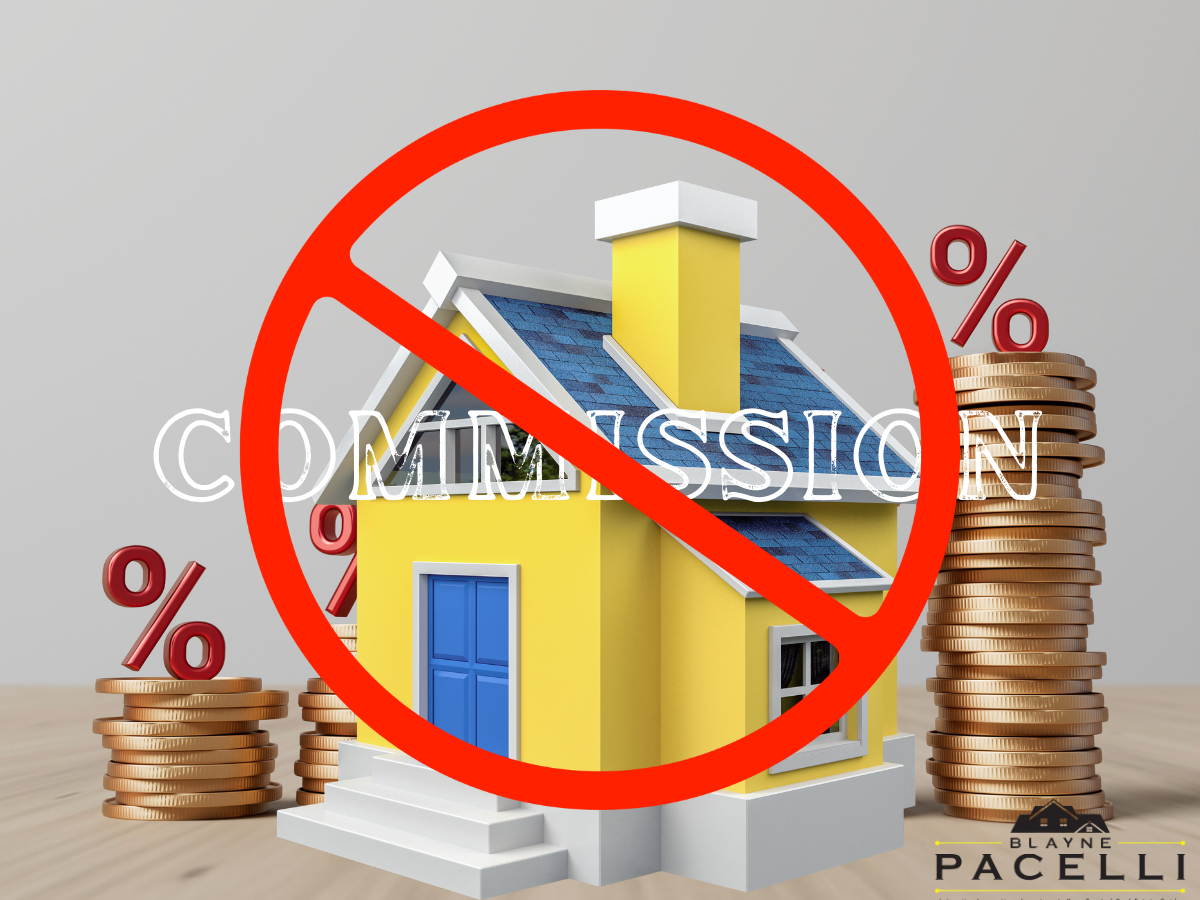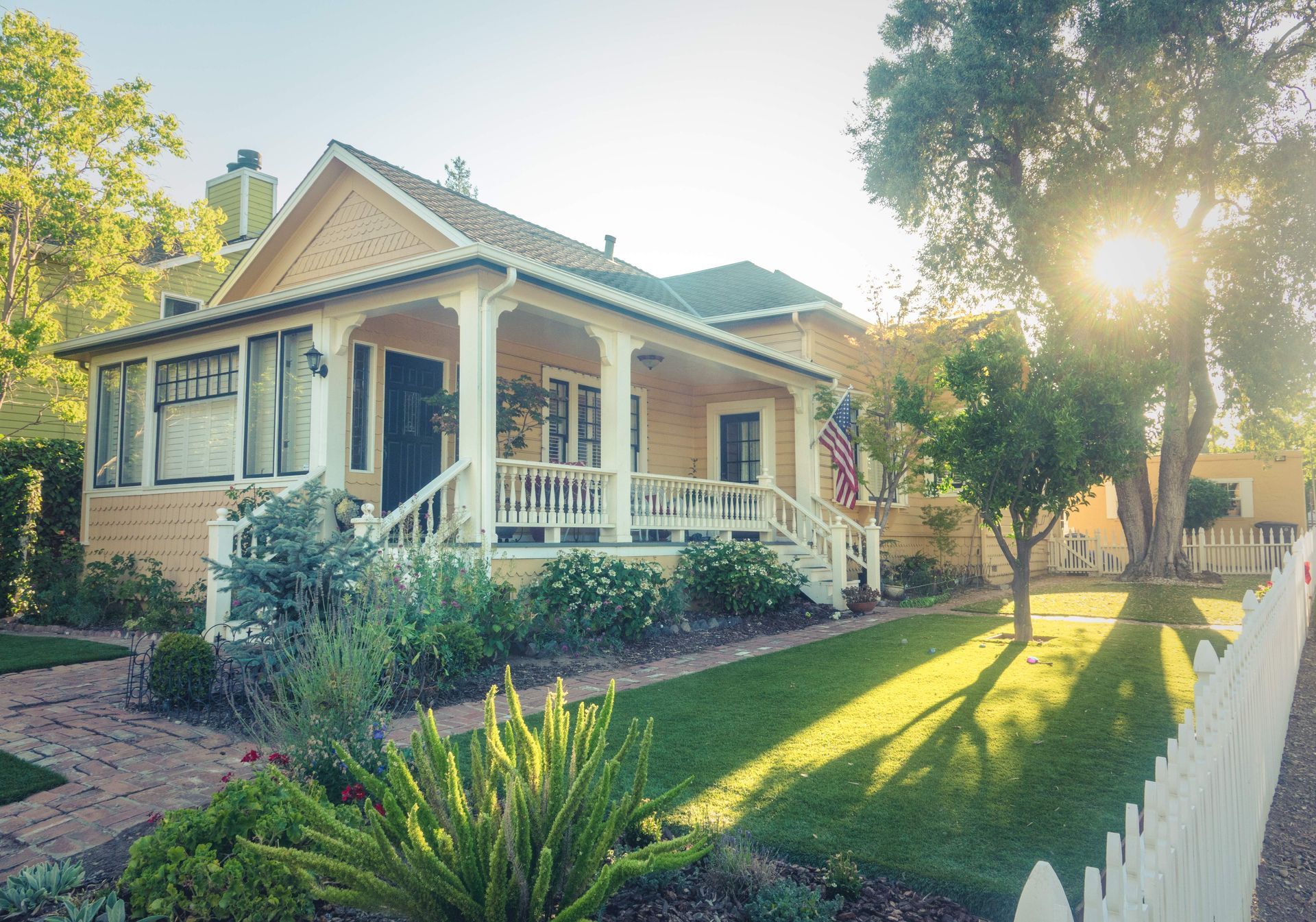Los Angeles Homeowner's Guide to Natural Disasters
Los Angeles is known for its beautiful weather, but it is also susceptible to various natural disasters. Being prepared for these emergencies is crucial to protect yourself, your family, and your home. This guide will help Los Angeles homeowners understand the potential natural disasters that can occur and provide plans for each type of emergency, including fires, earthquakes, strong winds, heatwaves, and even hurricanes.
Fires
Los Angeles is no stranger to the threat of wildfires, and the region has experienced its fair share of devastating fire incidents over the years. The city and its surrounding areas are susceptible to wildfires due to a combination of factors, including dry climate, strong Santa Ana winds, and extensive vegetation. Here's a closer look at the issue of wildfires in Los Angeles:
Frequency and Causes:
Wildfires in Los Angeles are a recurring concern, with a fire season that typically extends from late spring through early autumn. These fires can be triggered by various factors, such as lightning strikes, human activities (e.g., campfires, discarded cigarettes, and arson), and electrical equipment malfunctions. However, one of the most significant contributors to the intensity and rapid spread of wildfires in the region is the Santa Ana winds, characterized by their hot and dry gusts that can quickly fan flames.
Impact on Communities:
Los Angeles wildfires can have a profound impact on the region's communities. Homes and infrastructure are at risk of destruction, and residents often face mandatory evacuations to ensure their safety. The economic toll from property damage, loss of business, and firefighting efforts can be substantial. Moreover, the smoke and ash produced during wildfires can lead to hazardous air quality, posing health risks for residents even miles away from the flames.
Firefighting Efforts:
Los Angeles boasts a dedicated and skilled firefighting force, including the Los Angeles Fire Department (LAFD), which works tirelessly to combat wildfires. They deploy a combination of aerial firefighting resources, ground crews, and controlled burns to contain and extinguish fires. Additionally, mutual aid agreements with neighboring agencies provide critical support during large-scale incidents.
Prevention and Preparedness:
Prevention and preparedness are crucial elements in the fight against wildfires. Authorities regularly issue fire alerts and warnings, urging residents to create defensible spaces around their homes, clear vegetation, and follow evacuation orders when necessary. Community education programs and fire-resistant building materials also play a role in reducing the risk.
How to Prepare for Los Angeles Fire Season
1. Create a defensible space around your home by clearing dry vegetation, leaves, and debris.
2. Install spark arresters on chimneys and stovepipes.
3. Use fire-resistant roofing materials.
4. Have fire extinguishers readily accessible and ensure all family members know how to use them.
5. Develop a family emergency plan, including a designated meeting place.
Emergency Plan for Los Angeles Fires
1. Stay informed about local wildfires through news, emergency alerts, and weather reports.
2. If authorities issue evacuation orders, follow them immediately, taking only essential items and important documents.
3. Close all windows and doors before leaving.
4. Connect with neighbors to ensure everyone is aware of the situation and can help one another if needed.
5. Keep a "go-bag" ready with essential supplies, including water, non-perishable food, a first aid kit, flashlights, and important documents.
Los Angeles Homeowner's Guide to Natural Disasters
Los Angeles is known for its beautiful weather, but it is also susceptible to various natural disasters. Being prepared for these emergencies is crucial to protect yourself, your family, and your home. This guide will help Los Angeles homeowners understand the potential natural disasters that can occur and provide plans for each type of emergency, including fires, earthquakes, strong winds, heatwaves, and even hurricanes.
Fires
Los Angeles is no stranger to the threat of wildfires, and the region has experienced its fair share of devastating fire incidents over the years. The city and its surrounding areas are susceptible to wildfires due to a combination of factors, including dry climate, strong Santa Ana winds, and extensive vegetation. Here's a closer look at the issue of wildfires in Los Angeles:
Frequency and Causes:
Wildfires in Los Angeles are a recurring concern, with a fire season that typically extends from late spring through early autumn. These fires can be triggered by various factors, such as lightning strikes, human activities (e.g., campfires, discarded cigarettes, and arson), and electrical equipment malfunctions. However, one of the most significant contributors to the intensity and rapid spread of wildfires in the region is the Santa Ana winds, characterized by their hot and dry gusts that can quickly fan flames.
Impact on Communities:
Los Angeles wildfires can have a profound impact on the region's communities. Homes and infrastructure are at risk of destruction, and residents often face mandatory evacuations to ensure their safety. The economic toll from property damage, loss of business, and firefighting efforts can be substantial. Moreover, the smoke and ash produced during wildfires can lead to hazardous air quality, posing health risks for residents even miles away from the flames.
Firefighting Efforts:
Los Angeles boasts a dedicated and skilled firefighting force, including the Los Angeles Fire Department (LAFD), which works tirelessly to combat wildfires. They deploy a combination of aerial firefighting resources, ground crews, and controlled burns to contain and extinguish fires. Additionally, mutual aid agreements with neighboring agencies provide critical support during large-scale incidents.
Prevention and Preparedness:
Prevention and preparedness are crucial elements in the fight against wildfires. Authorities regularly issue fire alerts and warnings, urging residents to create defensible spaces around their homes, clear vegetation, and follow evacuation orders when necessary. Community education programs and fire-resistant building materials also play a role in reducing the risk.
How to Prepare for Los Angeles Fire Season
1. Create a defensible space around your home by clearing dry vegetation, leaves, and debris.
2. Install spark arresters on chimneys and stovepipes.
3. Use fire-resistant roofing materials.
4. Have fire extinguishers readily accessible and ensure all family members know how to use them.
5. Develop a family emergency plan, including a designated meeting place.
Emergency Plan for Los Angeles Fires
1. Stay informed about local wildfires through news, emergency alerts, and weather reports.
2. If authorities issue evacuation orders, follow them immediately, taking only essential items and important documents.
3. Close all windows and doors before leaving.
4. Connect with neighbors to ensure everyone is aware of the situation and can help one another if needed.
5. Keep a "go-bag" ready with essential supplies, including water, non-perishable food, a first aid kit, flashlights, and important documents.
For a full history of Los Angeles fires click here.
For a full history of Los Angeles earthquakes click here.
Earthquakes
Earthquakes are a prominent natural hazard in Los Angeles, and the city is situated along the Pacific Ring of Fire, making it particularly susceptible to seismic activity. Here is a comprehensive overview of earthquakes in Los Angeles:
Frequency and Causes:
Los Angeles experiences a regular occurrence of earthquakes, ranging from minor tremors to more significant seismic events. These earthquakes are primarily caused by the movement of tectonic plates along the San Andreas Fault and several other fault lines in the region. The complex network of active faults makes Southern California, including Los Angeles, one of the most seismically active areas in the United States.
Frequency and Causes:
Los Angeles experiences a regular occurrence of earthquakes, ranging from minor tremors to more significant seismic events. These earthquakes are primarily caused by the movement of tectonic plates along the San Andreas Fault and several other fault lines in the region. The complex network of active faults makes Southern California, including Los Angeles, one of the most seismically active areas in the United States.
Impact on Communities:
The potential impact of earthquakes on Los Angeles communities is substantial. The region's dense population and extensive infrastructure make it vulnerable to severe damage during a major quake. Earthquakes can result in the collapse of buildings, infrastructure failures, and the disruption of critical services. Residents may experience injuries, property damage, and displacement due to safety concerns.
Seismic Preparedness:
Los Angeles has implemented numerous measures to enhance earthquake preparedness and resilience. Building codes have been updated to ensure that structures are better equipped to withstand seismic forces. Public education campaigns, such as the Great ShakeOut, are conducted regularly to inform residents about earthquake safety measures, including "Drop, Cover, and Hold On." The city also maintains an early warning system to provide advance notice of impending shaking.
Emergency Response:
Los Angeles is well-prepared for earthquake response. The Los Angeles Fire Department (LAFD) and other emergency agencies have developed comprehensive disaster plans, including coordinated search and rescue efforts. Mutual aid agreements ensure that resources are readily available for immediate response. The city's emergency services are trained to manage the unique challenges posed by earthquakes, such as aftershocks and the potential for building collapses.
Community Resilience:
In addition to governmental efforts, individual and community preparedness are essential components of earthquake resilience in Los Angeles. Residents are encouraged to create emergency kits, secure heavy objects, and have a family communication plan in place. Neighborhood associations and community groups often play an active role in disaster preparedness and response, fostering a sense of community resilience.
Prepping for Los Angeles Earthquakes
1. Secure heavy objects, such as bookshelves and water heaters, to prevent them from falling during an earthquake.
2. Retrofit your home if it's older and not up to current seismic safety standards.
3. Create an emergency kit with food, water, first aid supplies, flashlight, batteries, and important documents.
4. Familiarize yourself with the "Drop, Cover, and Hold On" method for earthquake safety.
Emergency Plan:
1. During an earthquake, "Drop, Cover, and Hold On" until the shaking stops.
2. Afterward, check for injuries and administer first aid as needed.
3. Inspect your home for damage, gas leaks, and fire hazards. Shut off the gas if necessary.
4. Follow local news and emergency alerts for information on aftershocks and evacuation orders.
5. Stay connected with family and neighbors to ensure everyone is safe and accounted for.
Heat Waves
Heatwaves are a recurring and increasingly concerning natural hazard in Los Angeles, with rising temperatures exacerbated by climate change. These prolonged periods of extreme heat can have serious consequences for both residents and the environment. Here's a comprehensive overview of the impact of heatwaves in Los Angeles:
Frequency and Causes:
Los Angeles experiences heatwaves, particularly during the summer months, due to its Mediterranean climate. However, climate change has contributed to more frequent and intense heat events. Heatwaves can be caused by high-pressure systems that trap warm air, leading to a prolonged period of elevated temperatures. Additionally, the urban heat island effect, where urban areas are significantly warmer than surrounding rural areas, exacerbates the impact of heat waves in Los Angeles.
Impact on Communities:
1. Health Impacts: High temperatures can lead to heat-related illnesses such as heat exhaustion and heatstroke, particularly among vulnerable populations like the elderly, young children, and those with preexisting health conditions.
2. Energy Demand: The increased use of air conditioning during heatwaves places a significant strain on the electrical grid, potentially leading to power outages.
3. Drought and Water Resources: Prolonged heatwaves can exacerbate drought conditions, impacting water supply and availability.
4. Air Quality: Heatwaves can worsen air quality, leading to smog and increased levels of pollutants in the atmosphere.
5. Wildfires: Elevated temperatures and dry conditions during heatwaves can increase the risk of wildfires.
Heatwave Preparedness:
To prepare for heatwaves and reduce their impact, Los Angeles residents are encouraged to take several precautions:
1. Stay Hydrated: Drink plenty of water throughout the day, even if you're not feeling thirsty, to prevent dehydration.
2. Stay Cool: Seek out air-conditioned spaces such as shopping malls, libraries, and community centers, especially during peak heat hours.
3. Limit Outdoor Activities: Avoid strenuous outdoor activities during extreme heat, especially in the middle of the day.
4. Check on Vulnerable Individuals: Ensure the well-being of elderly neighbors, young children, and those with health conditions who may be more susceptible to heat-related illnesses.
5. Create a Cooling Plan: Develop a plan to stay cool, including using fans, portable air conditioning units, or cooling centers.
Emergency Plan:
1. Stay hydrated by drinking plenty of water, even if you're not thirsty.
2. Limit outdoor activities during peak heat hours and use sunscreen and protective clothing if you must go outside.
3. Check on vulnerable family members, friends, and neighbors, especially the elderly and young children.
4. Watch for signs of heat-related illnesses like heat exhaustion or heatstroke.
Strong Winds
Strong winds, particularly the infamous Santa Ana winds, pose a recurrent challenge to Los Angeles and its surrounding areas. These gusty winds are known for their ability to rapidly spread wildfires and cause property damage. Here's a detailed look at the impact of strong winds in Los Angeles:
Frequency and Causes:
Strong winds, such as the Santa Ana winds, occur periodically in Los Angeles, mainly during the fall and winter months. These winds originate from high-pressure systems over the Great Basin and flow through Southern California, particularly through mountain passes and canyons. Their high speed, low humidity, and dry conditions make them a significant factor in the region's susceptibility to wildfires.
Impact on Communities:
Strong winds can have a profound impact on Los Angeles communities. One of the most significant threats is their ability to rapidly spread wildfires, endangering homes and lives. The strong gusts can also cause power outages, disrupt transportation, and damage property, including downed trees and power lines. In addition to the immediate dangers, these winds can result in hazardous air quality due to dust and debris in the air.
Wind-Related Safety Measures:
Los Angeles residents are encouraged to take several precautions in preparation for strong winds:
1. Securing Outdoor Items: To prevent outdoor items from becoming projectiles, residents should secure or stow them. This includes patio furniture, potted plants, and trash cans.
2. Tree Maintenance: Regular tree trimming and removal of dead branches can minimize the risk of falling trees and limbs during high winds.
3. Power Outage Preparedness: Have flashlights, batteries, and a battery-powered radio readily available. Consider investing in a backup generator for critical appliances.
4. Driving Safety: Drivers should exercise caution when strong winds are expected, as gusts can affect vehicle stability. High-profile vehicles are particularly susceptible to wind-related accidents.
5. Emergency Kit: Maintain an emergency kit with essential supplies, including non-perishable food, water, a first aid kit, and important documents.
Preparing for Santa Ana Winds
1. Secure outdoor items, such as patio furniture and potted plants, to prevent them from becoming projectiles.
2. Trim trees and branches that could fall and damage your property.
3. Reinforce windows and doors with impact-resistant materials.
4. Have an emergency supply kit ready with essentials like water, non-perishable food, flashlights, and batteries.
Emergency Plan:
1. Stay indoors during strong winds to avoid flying debris.
2. If power goes out, use flashlights instead of candles to prevent fire hazards.
3. Monitor weather updates and emergency alerts.
4. Check for structural damage to your home after the storm has passed.
5. Help neighbors who may need assistance, especially the elderly or those with disabilities.
Hurricanes (Rare, but Possible)
Preparation:
1. Create an emergency kit with food, water, first aid supplies, flashlights, batteries, and important documents.
2. Secure or reinforce windows and doors.
3. Follow local evacuation plans and routes, if advised.
Emergency Plan:
1. Stay informed about the hurricane's path and progress through local news and emergency alerts.
2. Follow evacuation orders, if issued, and take your emergency kit with you.
3. Stay indoors during the storm, away from windows and glass doors.
4. After the hurricane, be cautious of flooding and downed power lines.
5. Only return home when authorities declare it safe to do so.
Remember, preparedness is key to surviving natural disasters. Regularly update your emergency kits, stay informed about local emergency procedures, and practice your plans with your family to ensure everyone knows what to do when disaster strikes. Additionally, consider joining community emergency response programs to enhance your readiness and support your neighbors during difficult times.
The Value of a Local Real Estate Agent: Beyond Mortgage Rates
If you'd like more information about environmental and natural disaster areas when considering your next Los Angeles home purchase please contact me. I'd love the opportunity to learn about your needs and match you up with the best possible choices for you and your family.
If you'd like assistance in finding your perfect Los Angeles home, my name is Blayne Pacelli and I'd be happy to help. Contact me today!













